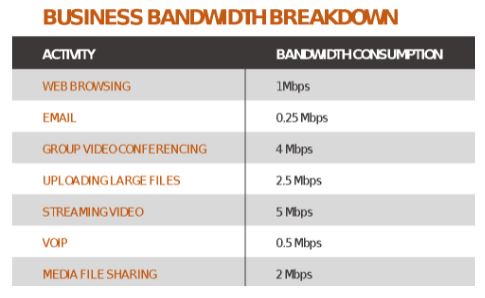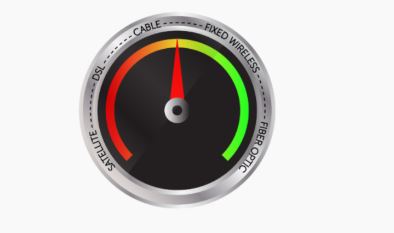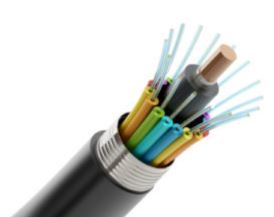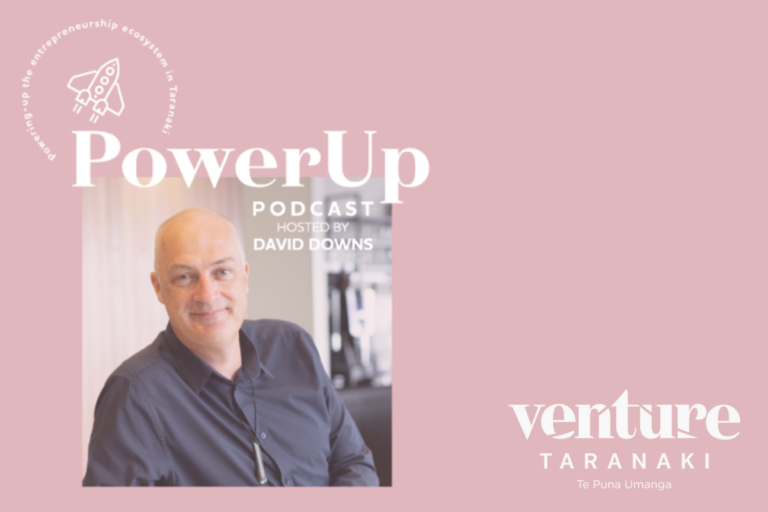
In today’s digital world, a strong internet connection is the lifeblood for most businesses. And, with new technology and digital ways of working available, it brings into sharp focus: exactly how much speed do you need?
First of all, what is bandwidth?
Well, measured in millions or billions of bits per second (Mbps/Gbps), bandwidth can be used as a representation of your internet speed. More accurately it’s a measurement of your internet capacity — i.e. How much data is allowed to move from point A to point B at any given time.
Simply put, a higher bandwidth means a higher volume of data can flow through at a faster rate.
Share and share alike
An easy way to think of bandwidth is to compare it to the water pressure in your home. Turn on your shower, and all the pressure will come through at once, but for every extra tap that’s turned on, your pressure will drop as the available water volume is shared out.
If you look at every device on your network as if it’s an additional ‘tap’, you can quickly see how congestion and low speeds could easily become a problem. Therefore, if one employee is uploading a large file to the Cloud while another is on a video call, you need to have enough bandwidth to support them both.
Plan Ahead
Even if your bandwidth suits your business needs right now, what about next year? Or three years from now?
Looking back, it’s easy to see how different digital trends have influenced the way we do business and have eventually become common practice. The drive towards Cloud-computing is one such example. It’s probably transformed the way you store data, manage customers, collaborate, and manage projects online—but it will also have dramatically increased your bandwidth requirements.
With digital development showing no sign of slowing down, it’s crucial that you plan to have the infrastructure to support it, and this means, you guessed it, having more bandwidth.
How much is enough?
So, how do you ensure you have adequate bandwidth to support your growth?
The first place to start, is to calculate your current bandwidth usage. If your current plan leaves you short right now, you’ll have absolutely zero room to grow.
Make an estimate based on your current number of employees, how many devices they use, the tasks they perform, and any peak usage times. And remember, not every online activity uses the same amount of bandwidth.
Alternatively, you can get a good idea of your maximum requirements by investigating the bandwidth used during a typical peak period.
Though rates can vary, below is a rough guide of how much bandwidth is needed for different internet activities:

Once you have a handle on your current needs, start to consider your future potential. Obviously there will be a lot of unknowns, but this demonstrates the importance of finding a flexible service provider, or plan, that allows you to easily scale your bandwidth as needed.
Review your options
Not only are your business needs constantly changing, but so too are the different internet connection plans available. Startlingly, an online survey by Digital Journey, found –
70% of New Zealand businesses haven’t reviewed their internet connectivity options within the past twelve months.
This represents an extraordinary number of businesses potentially sitting on plans they’ve outgrown or missing out on new options better suited to their needs.
Mode of Delivery
Conducting a review of your current plan should also encompass a review of the broadband technology or network your connections uses— this has a huge impact on your bandwidth speeds. Here’s an idea of your current options in New Zealand:

Fibre
The pinnacle of internet delivery methods, fibre-optic cables offer the fastest speeds available. Huge amounts of data can be transmitted in the form of light waves, at speeds close to the speed of light. Better still, the signal does not degrade over distance so your speed remains consistent wherever you’re located.
Hyperfibre
Hyperfibre couples the speed of fibre-optics with the latest advances in technology to give you internet speeds that can be up to 40x faster than the average New Zealand broadband speeds.
VDSL
Similar to ADSL, this system also uses copper telephone lines to transmit data, but in addition it combines modern technology in the form of fibre-optic cables to offer faster speeds.
Fixed wireless
Another form of wireless connection, this uses the 4G mobile network and, as such, needs a line of sight from a radio tower to your rooftop. Your connection is shared with others in your area which means it can be impacted by heavy usage.
ADSL
This is a wired connection that transmits data over traditional copper telephone lines via a dedicated fixed line. ADSL is limited in speed by the wiring it uses and its performance can degrade over distance.
Satellite
A form of wireless internet connection that bounces your signal from orbiting satellites to a satellite dish mounted on your roof. Though this may be handy for remotely populated areas, it can be expensive and, due to the huge distances involved, offers the lowest bandwidth speeds after dial-up.

Fibre broadband is a great option as it uses the congestion-free UFB network and has plenty of capacity ensuring your business is future proofed so you can expand, take on high profile projects, enter new markets and plan big!
Though your choices may be limited by your location, services are constantly being upgraded so it’s worth checking your options regularly with Chorus’ handy broadband checker.
Technical support and redundancy
Another thing to consider when reviewing your plan is the level of customer support it offers. How much help are you likely to need? How much is available? Can you access a dedicated business support team, and are they available 24/7?
Don’t skimp on asking these questions when speaking with your RSP (retail service provider) because inevitably, internet downtime costs you money. Do whatever you can to soften the blow if, and when, it arises. Make sure you investigate downtime contingencies like emergency mobile data or prioritisation of your needs.
A good place to start is to ensure you’re on a connection that was specifically designed for business use.
Chorus has specialised connections on its fibre network that offer all the speed and reliability benefits of a standard residential fibre connection but tailored for business needs, with additional levels of performance and service.
This include a business restore feature so in the unlikely event of a network issue (line damage or similar) your broadband connection will be prioritised to get you back online sooner.
To find which of our wholesale broadband connections best suits your needs check out our recommendation tool.








